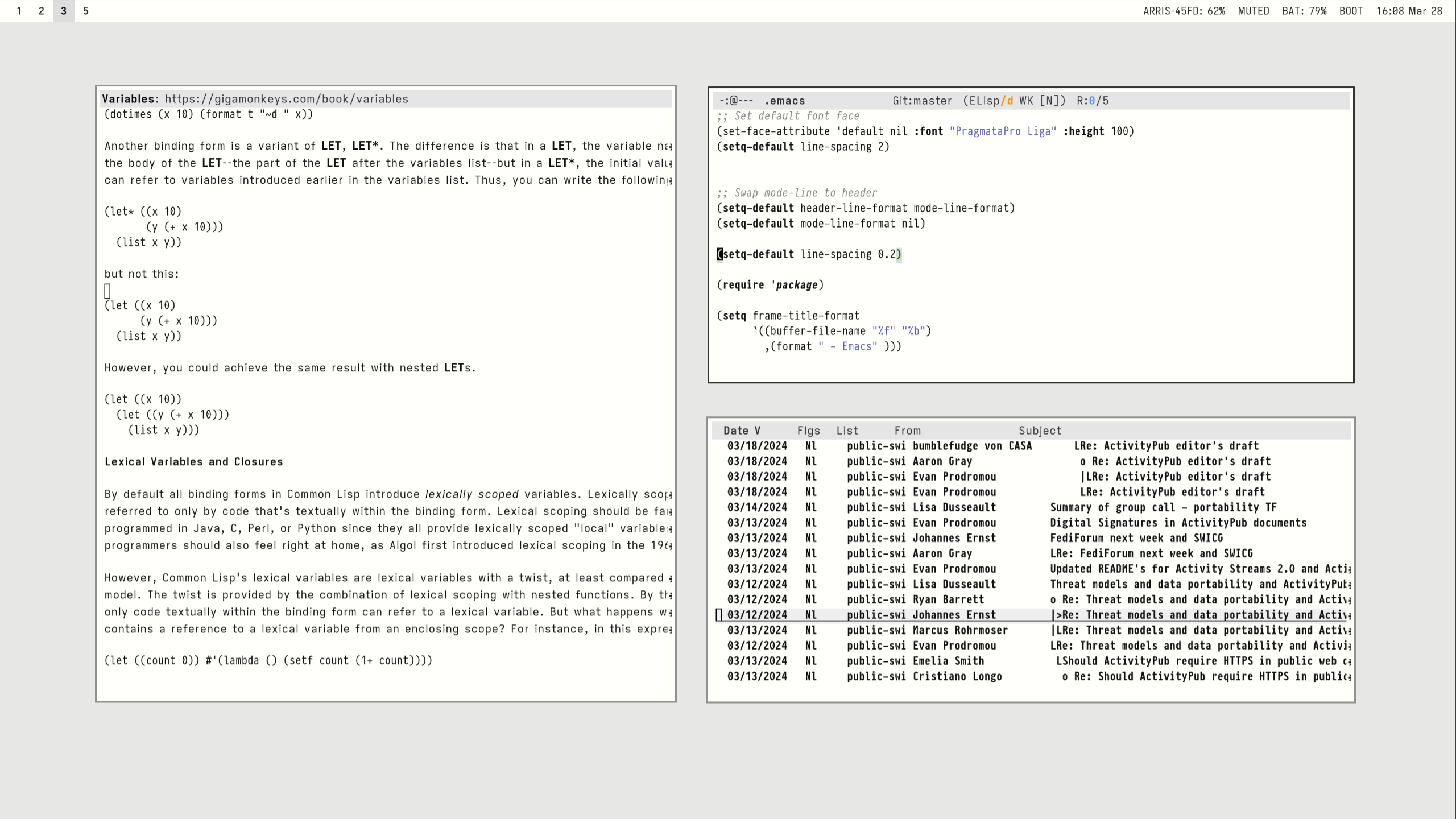this post was submitted on 02 Apr 2024
85 points (95.7% liked)
Unixporn
16522 readers
83 users here now
Unixporn
Submit screenshots of all your *NIX desktops, themes, and nifty configurations, or submit anything else that will make themers happy. Maybe a server running on an Amiga, or a Thinkpad signed by Bjarne Stroustrup? Show the world how pretty your computer can be!
Rules
- Post On-Topic
- No Defaults
- Busy Screenshots
- Use High-Quality Images
- Include a Details Comment
- No NSFW
- No Racism or use of racist terms
founded 6 years ago
MODERATORS
you are viewing a single comment's thread
view the rest of the comments
view the rest of the comments

Yes! Emacs has already taken over most of my desktop environment apps with the exception of the web browser and a few apps like Blender and Gimp. I haven't gone as far as you, getting each Emacs buffer to display in its own frame in is own WM-level window, but that would make for a more immersive experience. Also, your color scheme is similar to the one I use now. I love it.
I can't wait for the day when software written in Lisp takes over my window manager, then my panel, then my session manager, then my whole operating system kernel.
If you want each of them to be their own window you can do a:
to do that. (Note: not completely sure of the syntax but that's the basic idea of it)
That might work if I re-bound the
split-windowfunction to launch a new Emacs client, because this is the function that most other Emacs functions use to split the frame into windows.But I think a better approach would be to just add a single rule function into the
display-buffer-alistthat always asks for a new frame no matter what the input is.Mickey Peterson wrote an article on how Emacs manages its own windows, and the Elisp Manual on Windows is pretty good too.
Correction: it's
The -c flag seems important, as it creates a new frame (a new window)